Porsche Vision 357 is a conceptual celebration of 75 years of Porsche sports cars
Marking the 75th anniversary of Porsche’s original 356 No.1 Roadster, the sports car manufacturer has built this one-off concept as a gift to itself

2023 is a year of many anniversaries for Porsche. Not only is the venerable 911 celebrating its 60th year, but the company is also keen to foreground 100 years of the Le Mans 24 Hour, the gruelling endurance race that has been won by Porsche more than any other manufacturer. Perhaps most important of all is the 75th anniversary of Porsche’s very first sports car, the 356 No.1 Roadster – effectively the birth of the modern company.
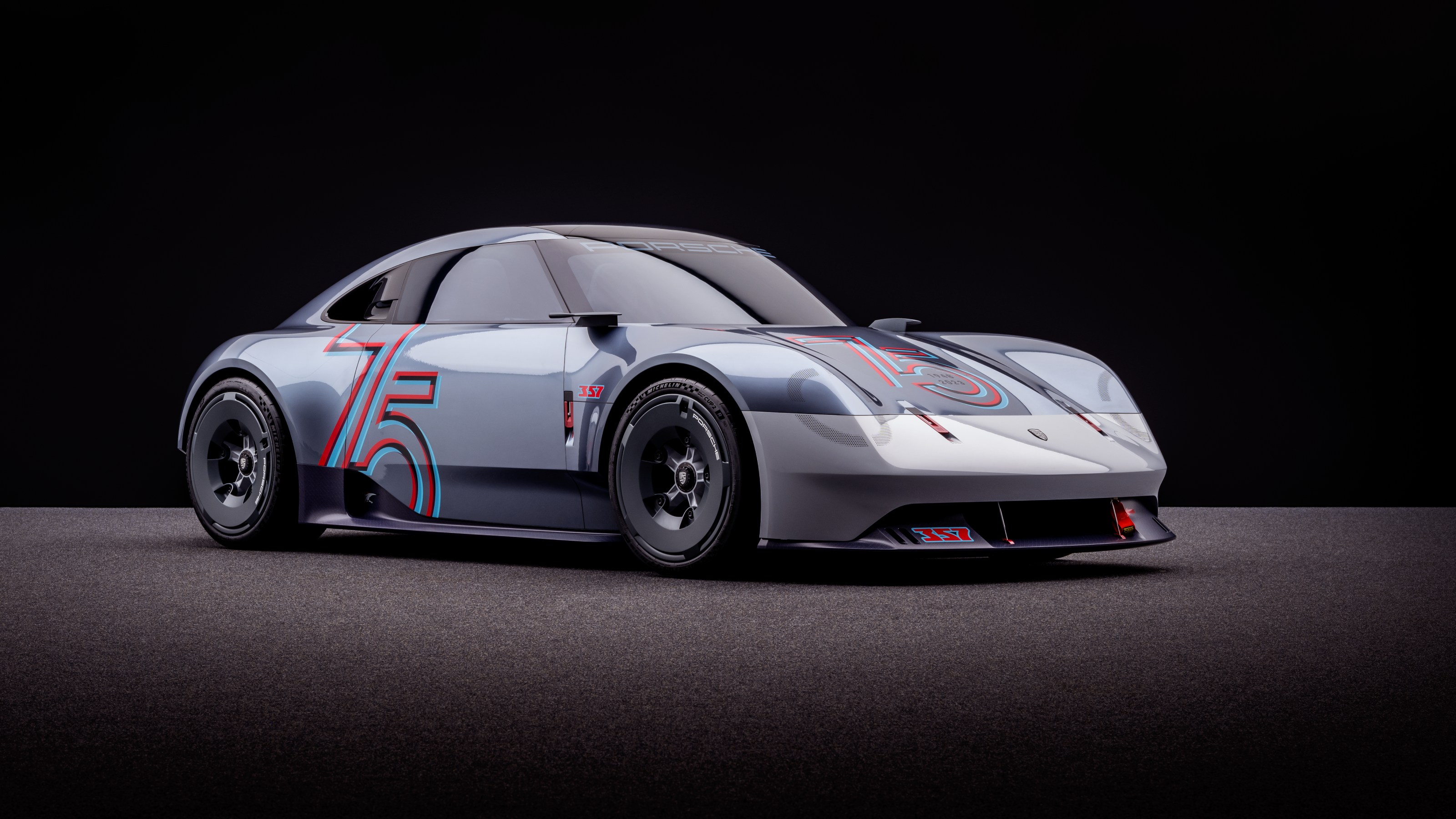
Celebrations of this milestone have included a dramatic new digital artwork inspired by Porsche’s brand purpose, Driven by Dreams, developed in collaboration with Lusion and Wallpaper*, and premiered in London in January 2023. But the company has gone further, with this special four-wheeled birthday present to itself, the Vision 357.
Porsche Vision 357: an unashamed sports car
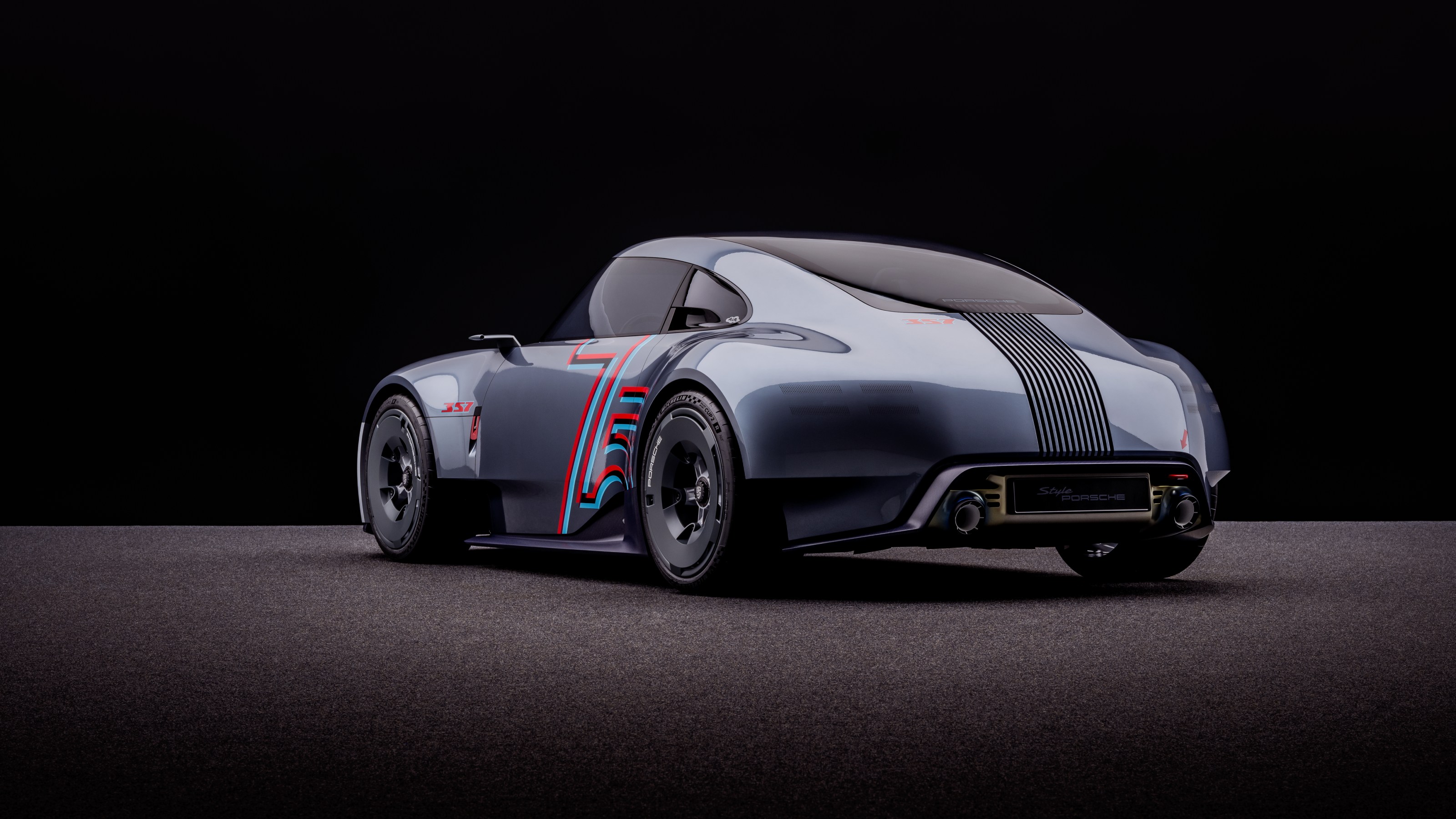
The Porsche Vision 357 is an unashamed sports car, built atop the most hardcore version of the brand’s current compact two-seater, the 718 Cayman GT4 RS. Michael Mauer, Porsche’s vice president of style, describes the design study as ‘an attempt to combine the past, present and future with coherency, featuring proportions that are reminiscent of its historical archetype and details that visualise the outlook for the future’.
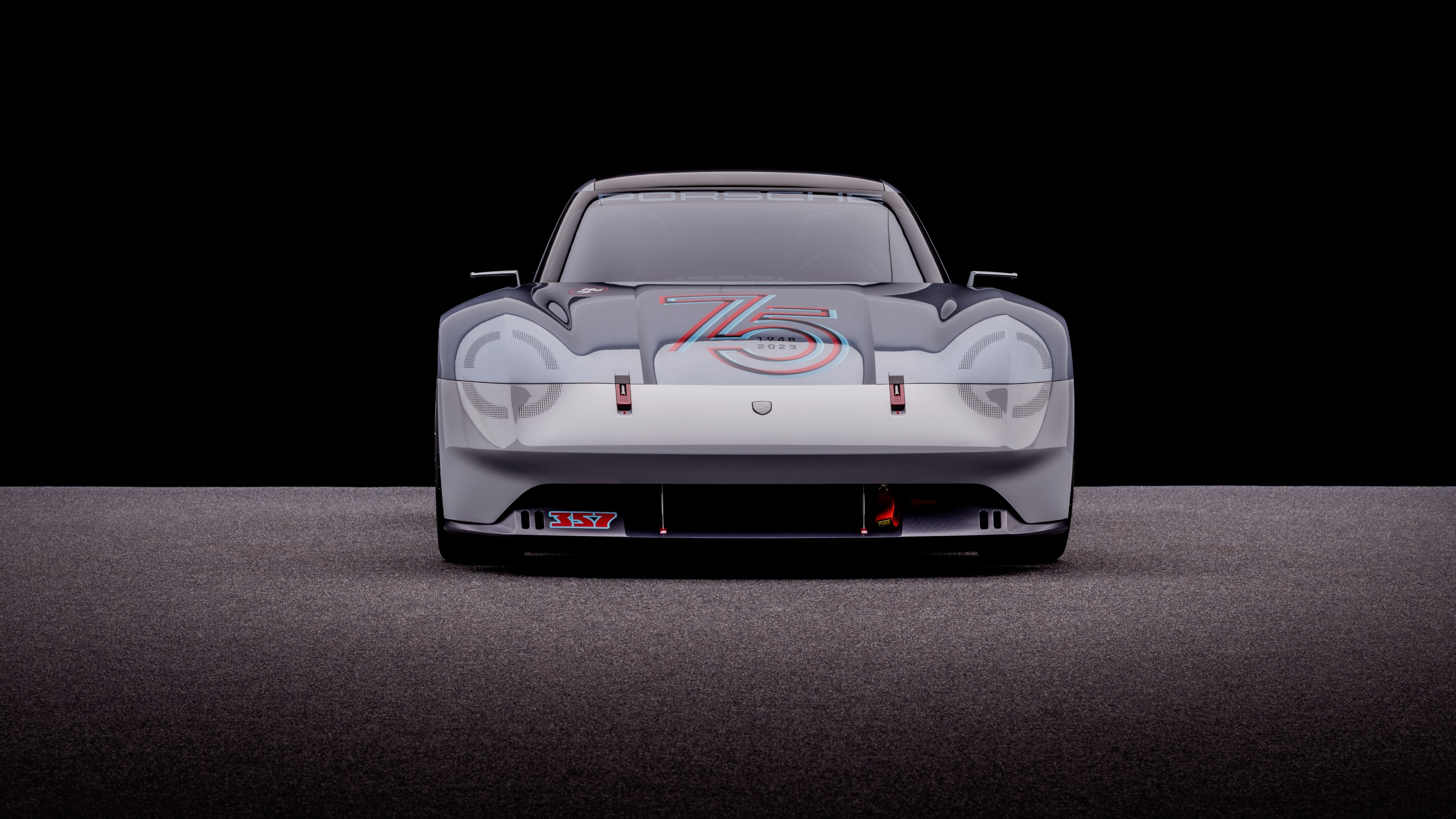
The Vision 357 captures some of the monolithic, clamshell-like detailing of Ferry Porsche’s original, VW-derived sports car, stripping the familiar silhouette back to its basic proportions and choosing to emphasise the curve of the roof as it flows down over the pronounced rear wheel arches.
There’s a refound simplicity, an approach lost to years of revisions, refinements and legislative compromises (an aspect of the project the design team were happy to completely ignore). The grey paintwork is another nod to the company’s early years, a time when the radical simplicity of the original 356 was a true breath of fresh air.
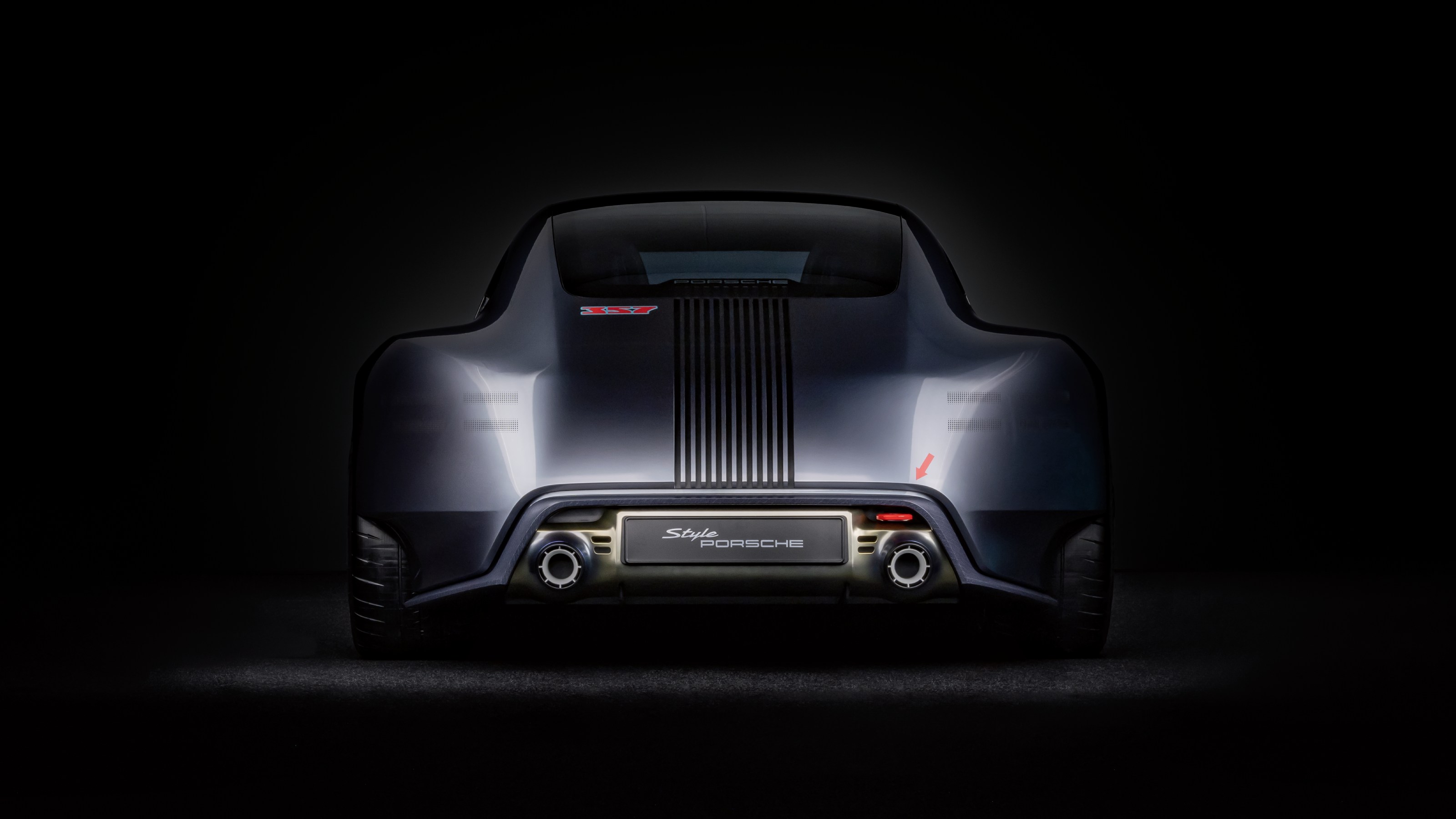
Does this concept herald a new design direction? Mauer is adamant that the 357 represents a chance to ‘play around and explore’, and the choice of a combustion engine might raise eyebrows. Perhaps only a company that is as truly comfortable with electrification as Porsche could make such a self-consciously retrograde decision; note the little dinosaur decal just ahead of the rear wheel arch. It’s a deliberate nod to fossil fuels.
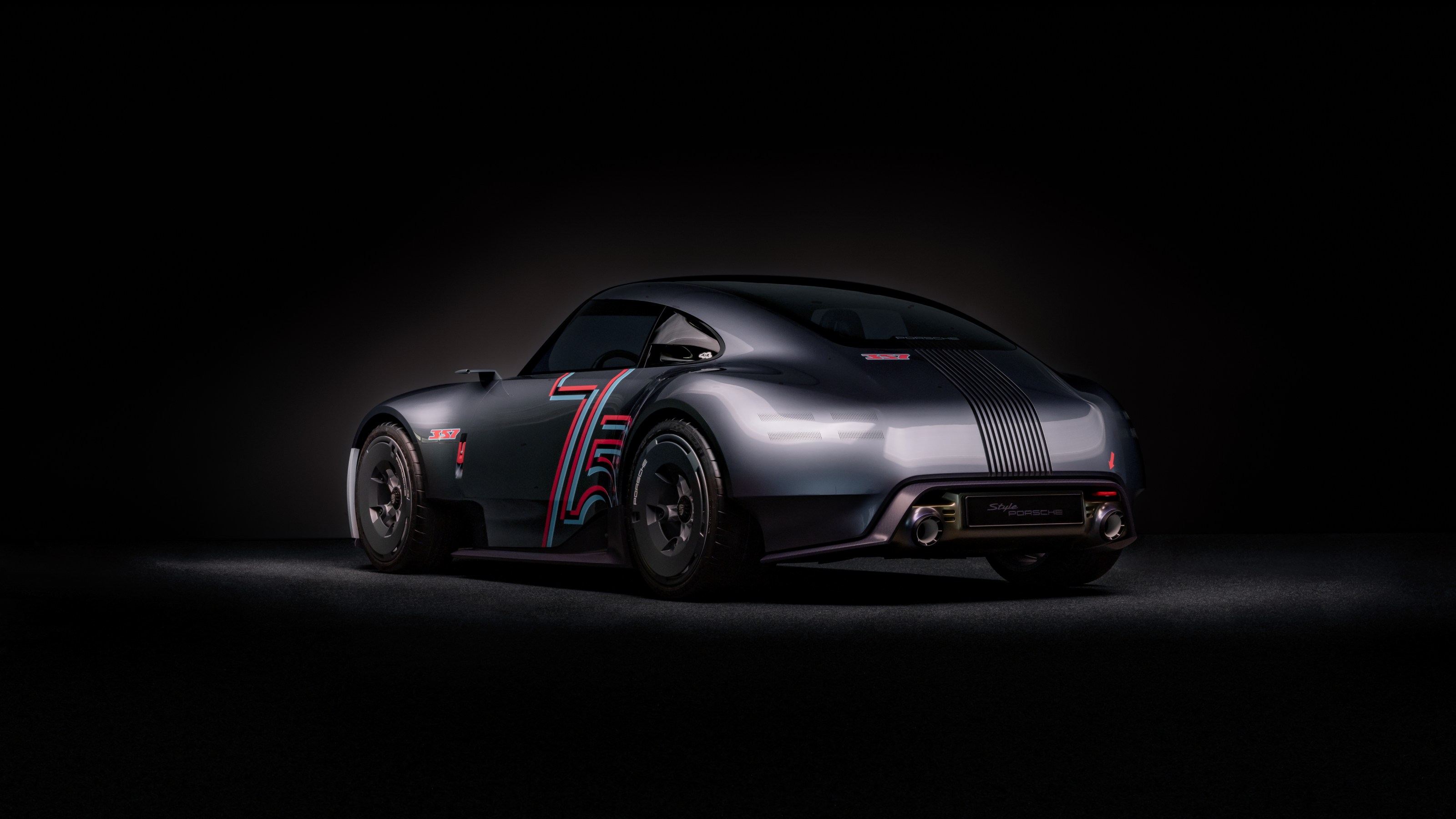
The most likely influence the 357 will wield is in Porsche’s approach to lighting. By using LEDs and blending the form of the headlights into the bodywork, Mauer and his team might have given a hint as to the future of one of the company’s most famous visual signatures. With EV versions of the Macan and 718 Boxster and Cayman waiting in the wings, all eyes are on Porsche to see how it evolves the electrification journey it began so successfully with the Taycan.
Receive our daily digest of inspiration, escapism and design stories from around the world direct to your inbox.
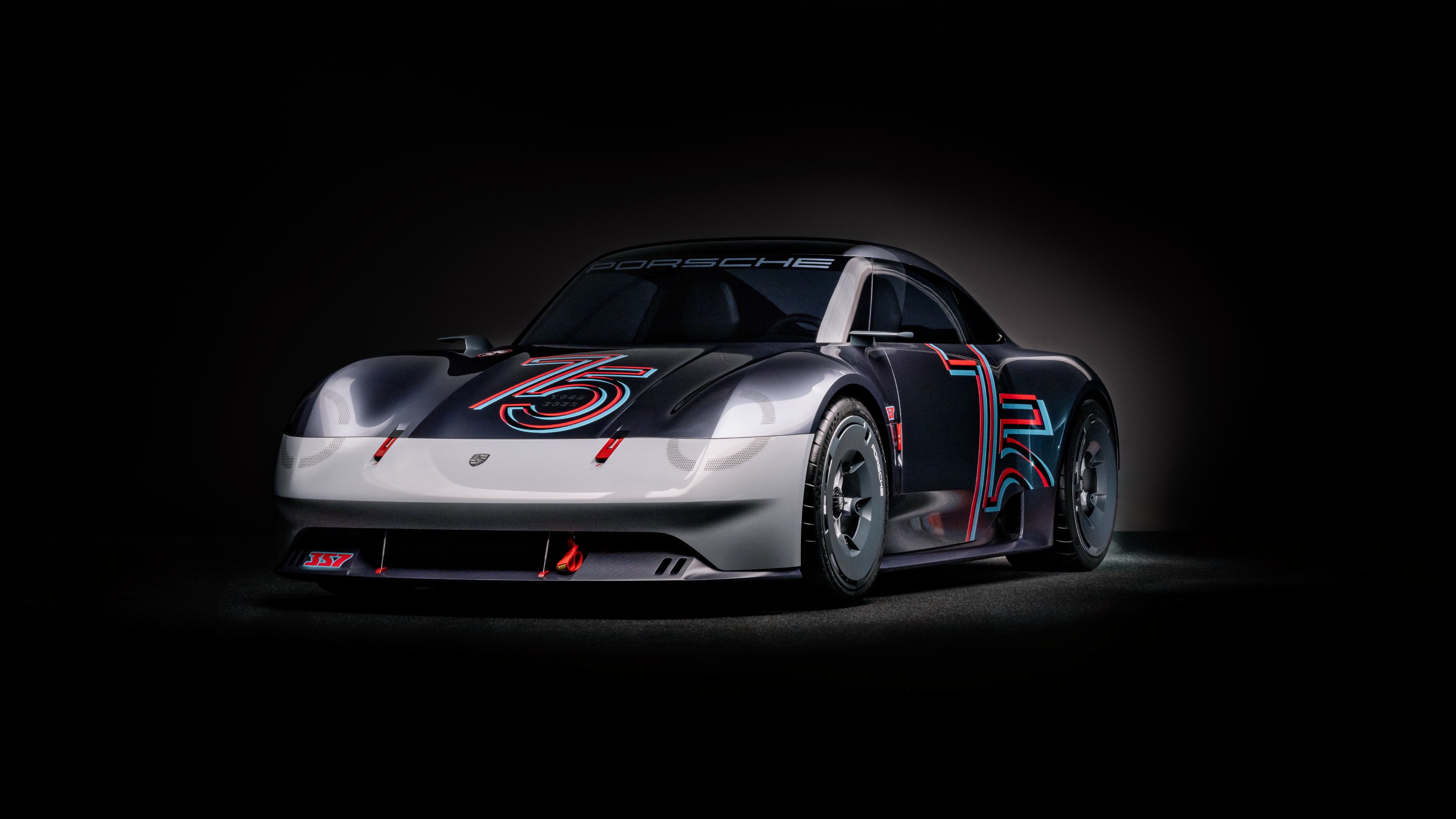
‘I’d be lying if I didn’t say we could have done it on the electric platform,’ Mauer says. ‘We wanted to avoid people taking this as the next generation 911.’ For now, take the Vision 357 at face value; a gift the design department has given to itself. The concept will be a key exhibit at the new exhibition, ‘75 Years of Porsche sports cars’, on show at the VW Group’s Forum in Berlin.
Porsche’s relationship with concept cars has shifted in recent years. For decades, the company kept its design studies under wraps, playing its cards close to its chest as it explored new niches, markets and technologies. Under Mauer’s leadership, the Stuttgart-based company has pulled the wraps off many recent design studies, even going so far as to publish a monograph, Porsche Unseen, of the best unseen models from the archives. Could the Vision 357 be built, even in an ultra-short production run? Mauer isn’t saying, but he is promising more such ‘gifts’ to come throughout the year.
Drive-Volkswagen-Group.com, Porsche.com
Jonathan Bell has written for Wallpaper* magazine since 1999, covering everything from architecture and transport design to books, tech and graphic design. He is now the magazine’s Transport and Technology Editor. Jonathan has written and edited 15 books, including Concept Car Design, 21st Century House, and The New Modern House. He is also the host of Wallpaper’s first podcast.
-
 How We Host: Interior designer Heide Hendricks shows us how to throw the ultimate farmhouse fête
How We Host: Interior designer Heide Hendricks shows us how to throw the ultimate farmhouse fêteThe designer, one half of the American design firm Hendricks Churchill, delves into the art of entertaining – from pasta to playlists
-
 Arbour House is a north London home that lies low but punches high
Arbour House is a north London home that lies low but punches highArbour House by Andrei Saltykov is a low-lying Crouch End home with a striking roof structure that sets it apart
-
 25 of the best beauty launches of 2025, from transformative skincare to offbeat scents
25 of the best beauty launches of 2025, from transformative skincare to offbeat scentsWallpaper* beauty editor Mary Cleary selects her beauty highlights of the year, spanning skincare, fragrance, hair and body care, make-up and wellness
-
 New Porsche Cayenne Electric makes a case for a sporting life with lashings of technology
New Porsche Cayenne Electric makes a case for a sporting life with lashings of technologyThe next-gen Cayenne gets its first all-electric model, a mighty SUV that’s also the first Porsche with wireless charging
-
 All the new electric cars and concepts revealed at Munich’s IAA Mobility 2025
All the new electric cars and concepts revealed at Munich’s IAA Mobility 2025Munich’s alternative motorshow is now in its third iteration, combining a traditional exhibition space with a conference and large-scale public activations on the streets of the city
-
 KAMManufaktur transforms the 1960s-era Porsche 912 into a refined restomod GT
KAMManufaktur transforms the 1960s-era Porsche 912 into a refined restomod GTThe KAMM 912T is a restomod Porsche for the more discerning collector, a rebuilt and re-engineered car that favours analogue feel and simplicity over all-out power
-
 All the best bits from Goodwood Festival of Speed 2025
All the best bits from Goodwood Festival of Speed 2025As car makers switch their allegiance to the sunny West Sussex countryside as a place to showcase their wares, a new generation of sports cars were sent running up that famous hill
-
 This Porsche surfboard collaboration captures the spirit of 1970s Southern California
This Porsche surfboard collaboration captures the spirit of 1970s Southern CaliforniaThe Porsche 911 Carrera RS 2.7 is the inspiration for the company’s second collaboration with California’s Almond Surfboards, featuring a custom-made board and limited-edition apparel and accessories
-
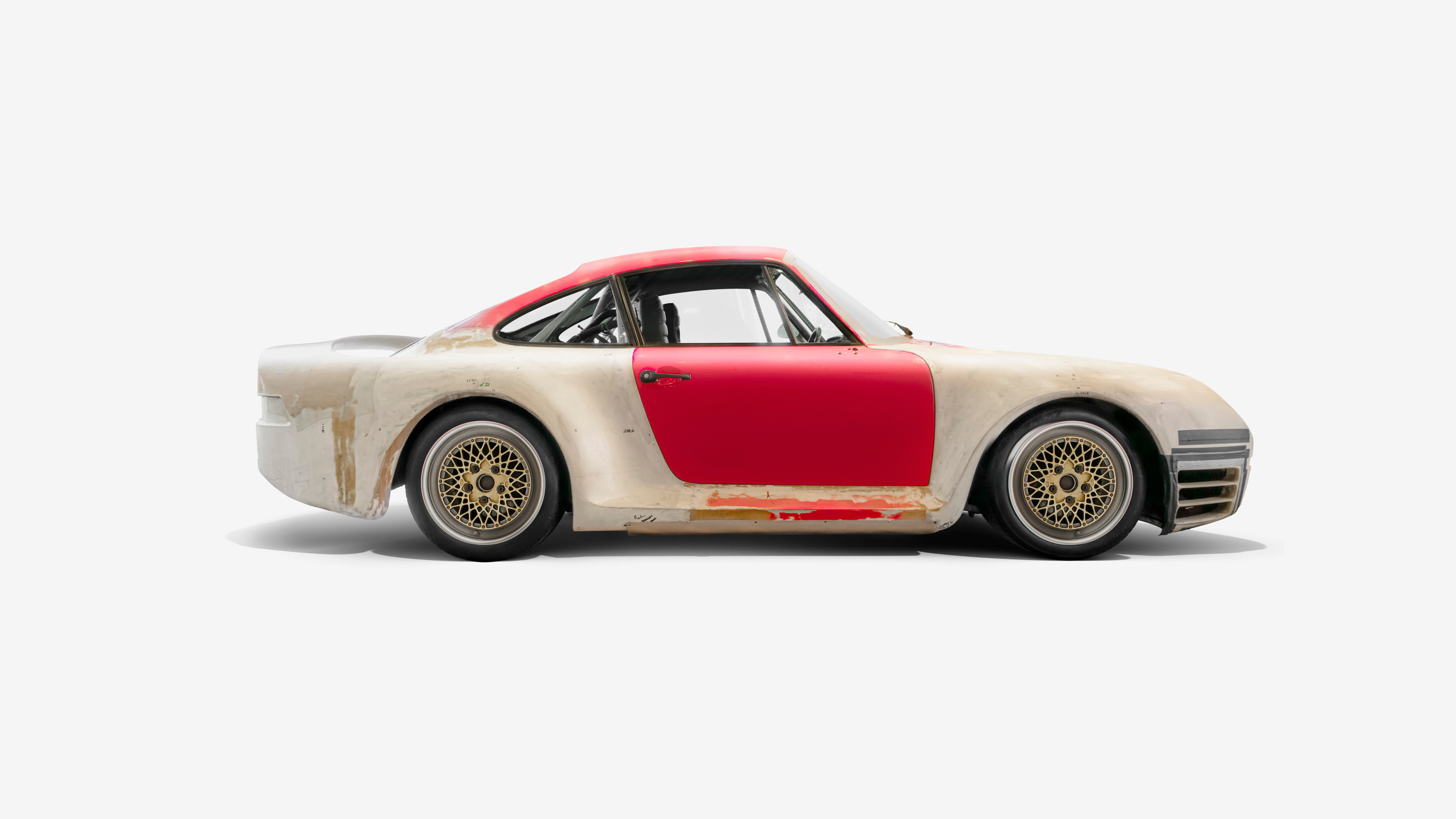 ‘Wundercar’ celebrates the ineffable aura of the Porsche 959, the first true hypercar
‘Wundercar’ celebrates the ineffable aura of the Porsche 959, the first true hypercarCurated by London creatives INK, ‘Wundercar’ is a London exhibition dedicated to the image and influence of Porsche’s seminal 959, a true icon of 1980s engineering
-
 The Porsche 911 Spirit 70 harks back to the aesthetic and ethos of the 1970s
The Porsche 911 Spirit 70 harks back to the aesthetic and ethos of the 1970sAs part of Porsche’s Heritage Design strategy, the company has launched a new special edition, the Porsche 911 Spirit 70 convertible
-
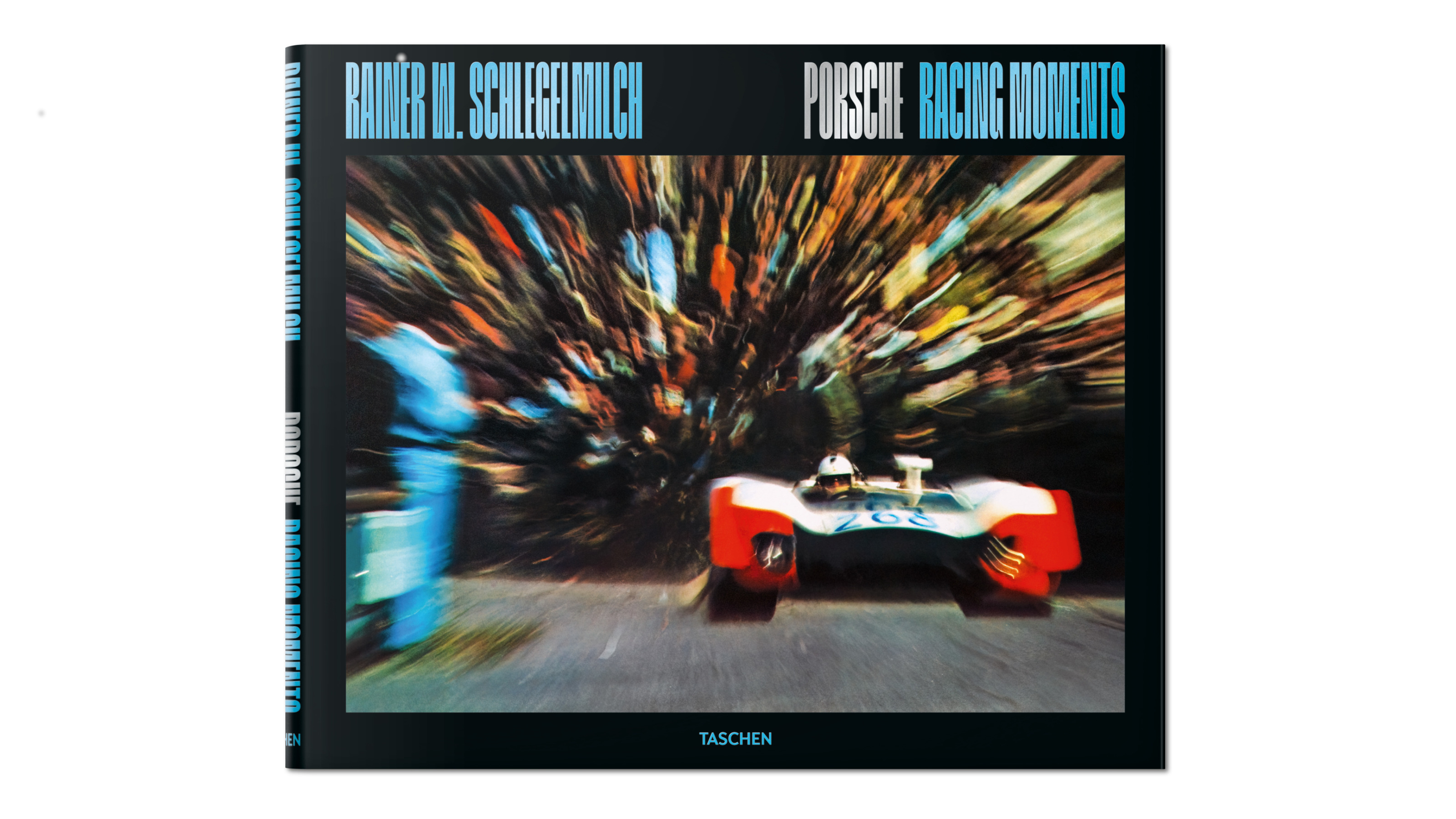 Rainer W. Schlegelmilch's Porsche photography showcases the aesthetics of speed
Rainer W. Schlegelmilch's Porsche photography showcases the aesthetics of speedTaschen's new edition of Rainer W. Schlegelmilch’s collected imagery from a quarter of a century spent following Porsche racing highlights historical machines, emotive camera technique and major moments on the track